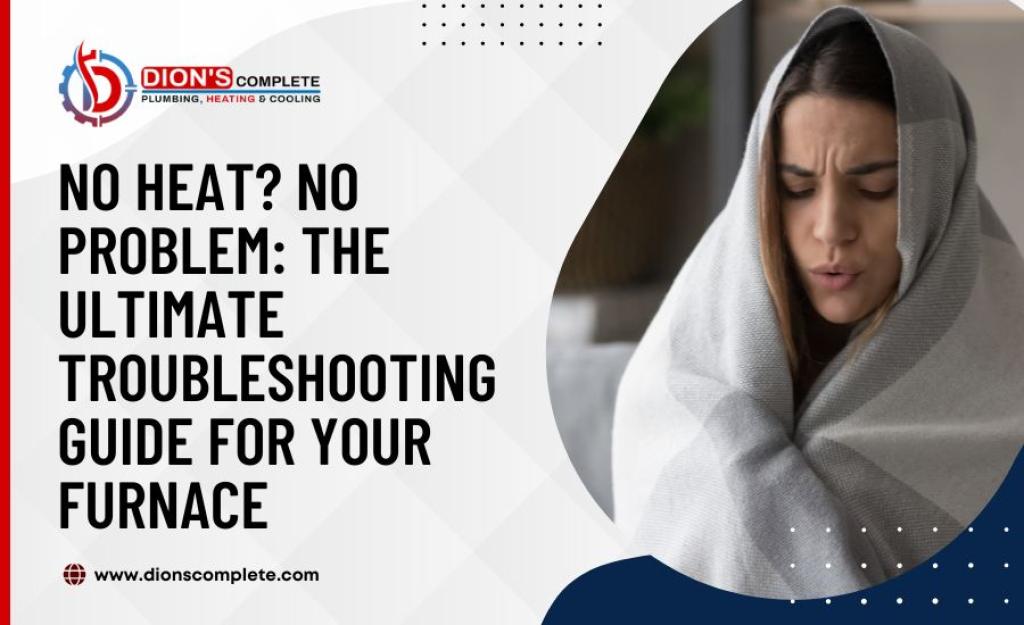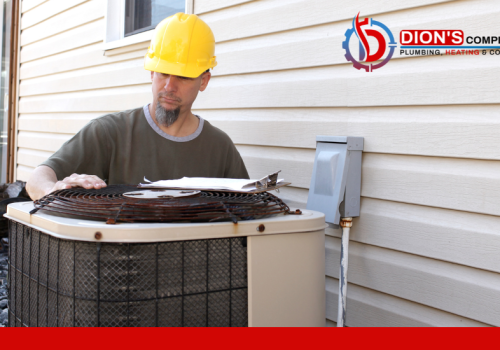Are you feeling the chill but your furnace seems to be taking a break? It can be frustrating and concerning, especially during the winter months. However, before you panic and call a professional, there are some steps you can take to troubleshoot the issue yourself. In this ultimate guide to troubleshooting your furnace, we’ll walk you through the common issues and solutions to help you get the heat flowing again.
Understanding Your Furnace
Before we dive into the troubleshooting process, let’s briefly review the main components of your furnace. Understanding how your furnace works will help you diagnose and fix problems more effectively.
Components of a Furnace
- Thermostat
- Gas valve
- Burner
- Heat exchanger
- Blower
- Ductwork
Troubleshooting Guide
Now that you have a basic understanding of the components of your furnace, let’s get started with the troubleshooting.
- Check the Thermostat
The first step is to check the thermostat. Make sure it’s set to “heat” and the temperature is higher than the current room temperature. If it’s a programmable thermostat, ensure that it’s programmed correctly. If you have an old thermostat, consider upgrading to a newer, more efficient model.
- Check the Power Supply
If the thermostat seems to be working correctly, the next step is to check the power supply. Make sure the furnace is getting power by checking the circuit breaker and the on/off switch on the furnace itself.
- Check the Gas Supply
If the power supply is not the issue, the next step is to check the gas supply. Make sure the gas valve is open and the gas supply is on. If you smell gas, turn off the gas supply immediately and call a professional.
- Check the Burner
If the gas supply is not the problem, the burner may be the issue. Check the burner for any debris or blockages, such as dust or dirt. If you see any debris, clean it off carefully. If the burner looks damaged, call a professional to replace it.
- Check the Heat Exchanger
If the burner seems to be working correctly, the heat exchanger may be the problem. Inspect the heat exchanger for any cracks or signs of damage. If you see any damage, call a professional to replace it immediately. A damaged heat exchanger can be dangerous and cause carbon monoxide leaks.
- Check the Blower
If the heat exchanger is not the issue, the blower may be the problem. Check the blower for any obstructions, such as debris or a clogged air filter. If the air filter is dirty, replace it with a new one.
- Check the Ductwork
If none of the above steps work, the ductwork may be the problem. Check the ductwork for any leaks or blockages. If you find any issues, call a professional to fix them.
Why is my furnace blowing cold air?
Your furnace could be blowing cold air due to a dirty air filter. Your furnace has an air filter that helps to keep the air in your home clean and free of dust and debris. But when the filter gets dirty and clogged, it can’t do its job effectively, and the airflow through the furnace can be restricted. This can cause the furnace to overheat and shut off, resulting in cold air blowing through your vents. To fix this issue, simply replace your air filter with a new one.
Another possible cause of your furnace blowing cold air is a malfunctioning thermostat. Your thermostat is the device that controls the temperature in your home, and if it’s not working properly, it can cause your furnace to blow cold air. One common issue is a dead battery in the thermostat, so check to make sure the batteries are fresh and have enough charge. If the thermostat still isn’t working, it may be time to call in a professional to diagnose and fix the problem.
A faulty pilot light could be one other possible cause that you should consider. The pilot light is a small flame that ignites the gas in your furnace to create heat. If the pilot light is out or not working properly, it can cause your furnace to blow cold air. In this case, relighting the pilot light may fix the problem. However, if you’re not comfortable doing this yourself, it’s best to call a professional.
How often should I replace my furnace filter?
Your furnace filter is a crucial component of your heating and cooling system. It’s responsible for filtering out dust, pollen, and other debris from the air before it gets circulated throughout your home. Without a clean filter, your furnace has to work harder to push air through, which can lead to decreased efficiency, higher energy bills, and even system breakdowns.
So, how often should you replace your furnace filter? The answer isn’t a one-size-fits-all solution. The frequency with which you should change your filter depends on several factors, including the type of filter you have, the size of your home, and the number of people and pets that live in your space.
For standard 1-inch filters, it’s generally recommended that you change them every 1-3 months. However, if you have pets or allergies, you may need to replace them more frequently. If you have a thicker, high-efficiency filter, you can typically go longer between replacements, up to 6 months or more.
It’s also important to keep in mind that your filter can become clogged more quickly if you live in an area with high levels of air pollution or if you use your HVAC system frequently. In these cases, you may need to replace your filter more often than the standard recommendations.
But why is it so important to stay on top of filter replacements? Well, aside from the decreased efficiency and potential system breakdowns mentioned earlier, a dirty filter can also negatively impact your indoor air quality. As the filter becomes clogged, it can no longer effectively capture airborne pollutants, which can lead to increased allergy symptoms and respiratory issues.
To ensure that your furnace is operating at its best, it’s crucial to stay on top of filter replacements. Make sure to check your filter every month and replace it as needed. And don’t forget to schedule regular maintenance appointments with your local HVAC service provider to keep your system running smoothly all year round.
Why is my furnace making strange noises?
Have you ever heard strange noises coming from your furnace? If so, you may be wondering what’s causing it and whether it’s something you should be concerned about. Well, the truth is that strange noises coming from your furnace can be a sign of several different issues, ranging from minor problems to serious malfunctions that require immediate attention.
One common cause of strange furnace noises is a dirty air filter. When your furnace’s air filter becomes clogged with dirt and debris, it can restrict the flow of air through the system, causing it to work harder and generate more noise. In this case, simply replacing the air filter may solve the problem.
Another potential cause of furnace noises is a malfunctioning blower motor. Your furnace’s blower motor is responsible for circulating air throughout your home, and if it’s not working properly, it can generate strange noises such as squeaks, rattles, or grinding sounds. In some cases, the blower motor may need to be repaired or replaced to fix the issue.
Yet another possible culprit behind strange furnace noises is a faulty ignition system. If your furnace’s ignition system is malfunctioning, it can cause the furnace to make a variety of unusual sounds, such as clicking or popping noises. In some cases, a faulty ignition system can also be a safety hazard, so it’s important to have it inspected and repaired by a professional as soon as possible.
Of course, these are just a few examples of the many potential causes of strange furnace noises. Other factors, such as loose components, worn-out bearings, or a malfunctioning thermostat, can also contribute to furnace noise issues.
So, what should you do if you hear strange noises coming from your furnace? First and foremost, don’t ignore the issue. Even if the noises seem relatively minor, they could be a sign of a more serious problem that requires professional attention.
To start, you can try changing your furnace’s air filter to see if that solves the issue. If the noise persists, it’s time to call in a professional HVAC technician. They will be able to diagnose the problem and recommend the appropriate course of action, whether that’s a simple repair or a full replacement of your furnace.
In the meantime, it’s important to remember that regular maintenance is key to keeping your furnace running smoothly and preventing issues like strange noises from occurring in the first place. By scheduling annual tune-ups and staying on top of routine maintenance tasks, you can help ensure that your furnace stays in good condition and runs efficiently for years to come.
How can I improve the efficiency of my furnace?
There are several ways to improve the efficiency of your furnace and save money on your heating bills:
- Change the air filter regularly: A clogged air filter can restrict airflow and make your furnace work harder than necessary. Check your filter once a month and replace it when it’s dirty.
- Seal air leaks: Air leaks around windows, doors, and other openings can let cold air in and warm air out. Seal these leaks with caulk, weatherstripping, or foam insulation.
- Install a programmable thermostat: A programmable thermostat can automatically adjust the temperature in your home to match your schedule. Set it to lower the temperature when you’re away or sleeping and raise it when you’re home and awake.
- Have your furnace serviced regularly: A professional furnace tune-up can ensure that your furnace is running at peak efficiency. Your HVAC technician can clean the system, check for any issues, and make necessary repairs.
- Consider upgrading or installing a high-efficiency furnace: If your furnace is old and inefficient, upgrading to a newer, high-efficiency model can save you a significant amount of money on your heating bills over time.
By implementing these measures, you can improve the efficiency of your furnace and keep your home warm and comfortable while saving money on your energy bills.
Conclusion
By following these troubleshooting steps we’ve detailed in this article, you can diagnose and fix common furnace problems yourself. However, if you’re not comfortable working with gas or electricity, it’s always best to call a professional. Remember to schedule regular maintenance for your furnace to keep it running efficiently, prolong the longevity of your furnace, and prevent future problems. Stay warm and cozy all winter long!





